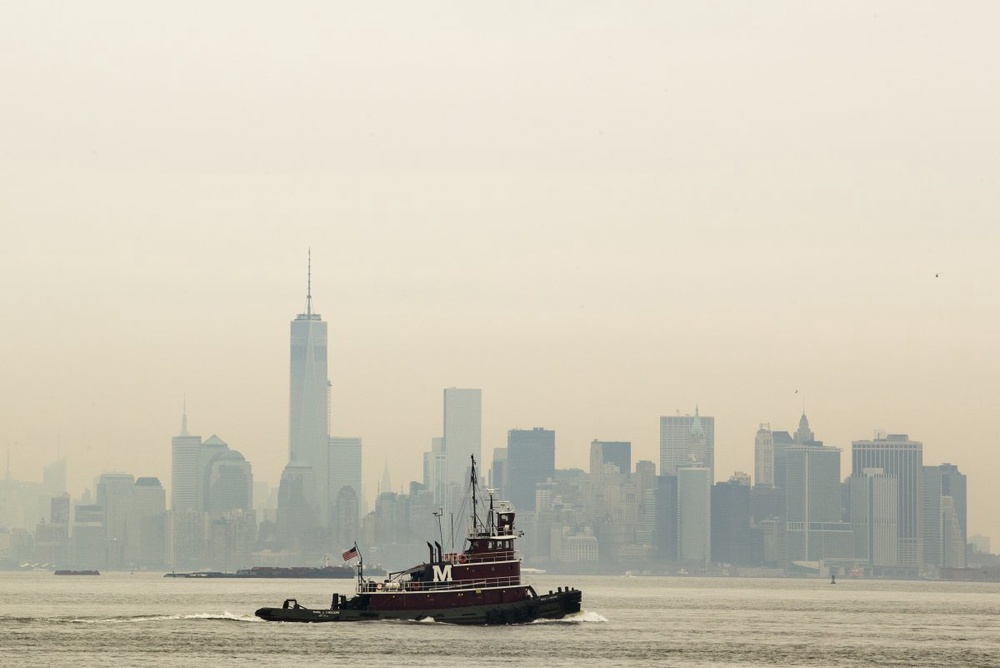
Most New Yorkers don't even know it exists. But a million forgotten souls are buried in mass graves dug by convicts on a tiny, forbidden island east of the Bronx, AFP reports.





Most New Yorkers don't even know it exists. But a million forgotten souls are buried in mass graves dug by convicts on a tiny, forbidden island east of the Bronx, AFP reports.
Since 1869, still-born babies, the homeless, the poor and the unclaimed have been stacked one upon the other, three coffins deep, on Hart Island.
Corpses are interned in great, anonymous trenches. There are no tombstones. Small white posts in the ground mark each 150 adult bodies. A thousand children and infants are buried together per grave.
It is one of the largest cemeteries in the United States. And the least visited.
The men doing the digging are convicts from Rikers Island, petty offenders tasked with carrying bodies to their final resting place.
Nearly 1,500 fresh corpses arrive each year, says visual artist Melinda Hunt, who heads the Hart Island Project, which campaigns to make the cemetery visible and accessible.
The authorities say nearly a million people have been buried here since 1869.
It is forbidden to film and photograph the uninhabited, windswept island. Visits must be authorized by the Department of Corrections, which runs the island.
First used as a cemetery in the Civil War, Hart Island has variously served as a training camp, a prison for captured Confederates, a workhouse, a mental asylum and even a Cold War missile base.
The only jetty is closed to the public, hemmed in by railings, barbed wire and spikes. Notice boards warn people to keep out.
Records long inaccessible
For years, records of who's been buried where have been patchy and negotiating access has proved challenging.
Some have been lost, others burnt. Families sometimes cannot even find out if their loved ones were buried by the city.
"You have a right to know where a person is. It's very important not to disappear people. It's not an acceptable thing to do in any culture," Hunt said.
The Department of Corrections says it doesn't have the infrastructure to welcome visitors on an island where the buildings are dilapidated and abandoned.
Under pressure, however, the authorities have allowed a few visits since 2007, albeit within a gazebo far from the graves.
"You don't see anything," said Elaine Joseph, a 59-year-old nurse whose baby daughter died at five days old in 1978.
"They check your ID, and ask you to hand over your cell phone, any electronic equipment and they put it in an envelope and lock it and then you get to the island, they ask for your ID again.
"They treat you as a visitor of an inmate," she said.
In November, a small group of women who threatened to bring a complaint were given permission to visit specific grave sites.
Joseph became the first to go on March 14.
Once there, she broke down in tears.
"I can't say I found closure. When you lose a child, there really is never closure. There is a piece of you that is gone," she said.
"I did find solace in that there was water surrounding it and there was a lovely view."
She was even allowed to take a photograph.
Laurie Grant, a 61-year-old doctor who gave birth to a still-born daughter in 1993, hopes to be the next.
But on March 28, she waited in vain in the rain on the jetty.
Due to unwillingness or miscommunication, those who were supposed to ferry her across the water left before she even arrived.
Public cemetery closed to public
Over the years, Hunt said she has lost track of all the families she has tried to help, though estimates the number is at least 500.
Most were Americans, but there have been others from France, the Netherlands and Poland, and one Irish woman looking for a grandfather.
The Hart Island Project has so far managed to list more than 60,000 burials in the database.
A bill has been introduced to the city council seeking to transfer the island to the parks administration, but has not been taken up yet.
Joseph dreams of being able to return as often as she wants to what she calls "a public cemetery that the public is not allowed to visit."
She also dreams of flowers and a bench to honor her baby. "If I can put a marker on a bench, I'll be happy," she said.


 +7 (777) 001 44 99
+7 (777) 001 44 99















































